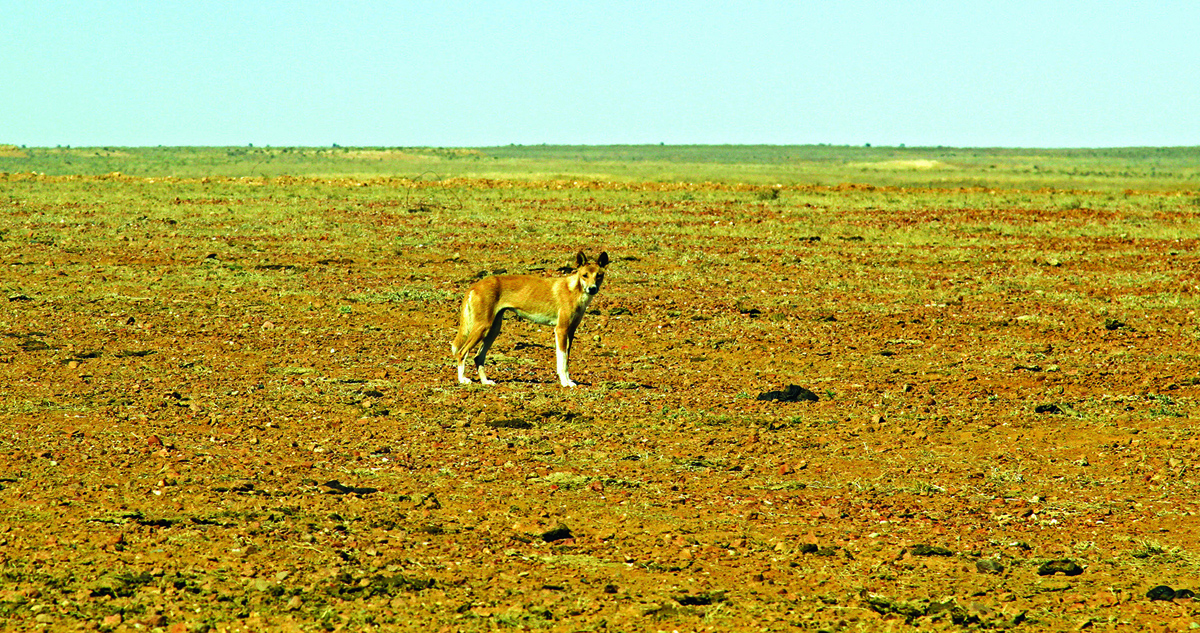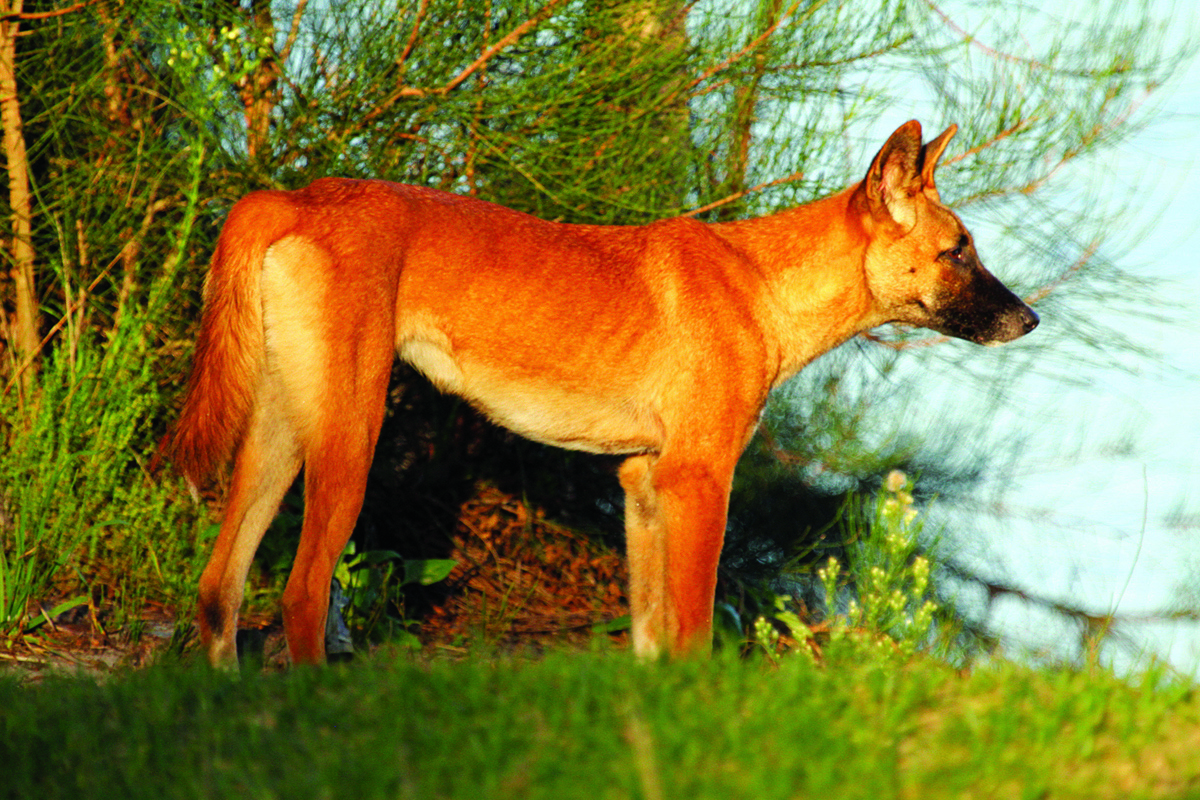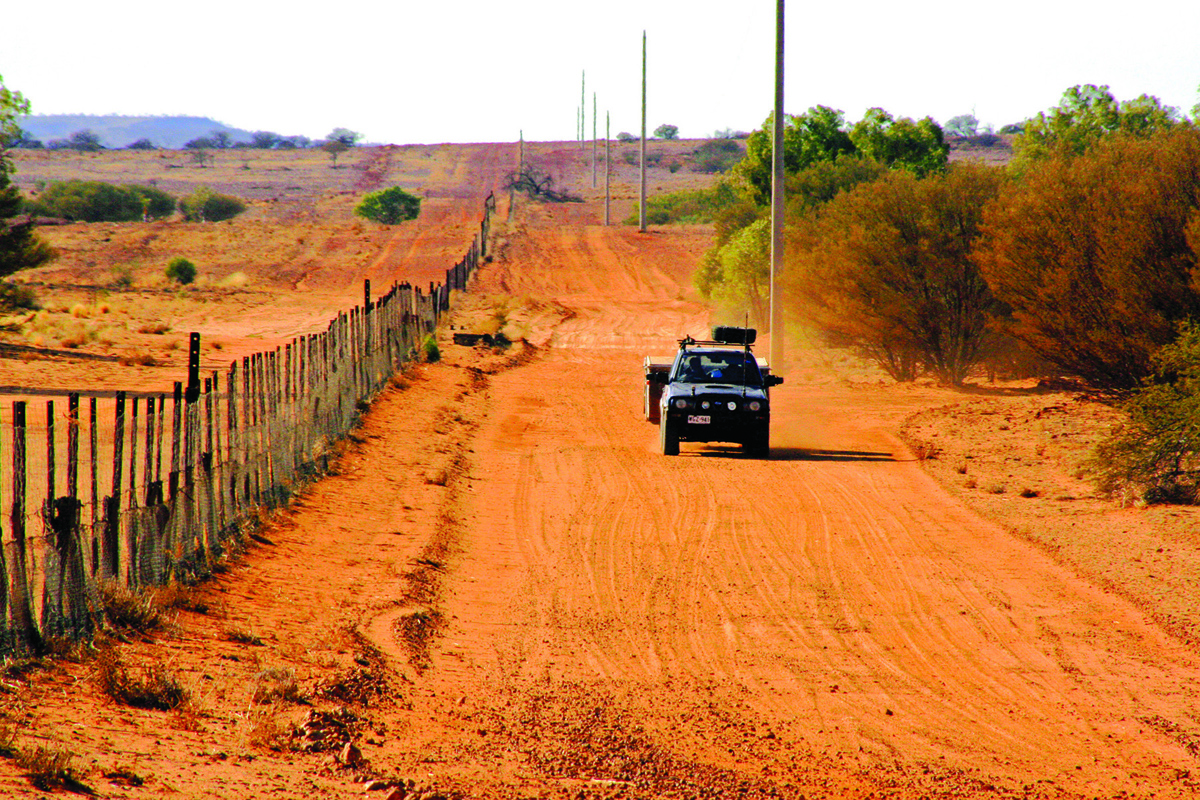There are few structures in the world to rival the famous ‘Dog Fence’, the barrier created to limit the impact and damage of wild dingoes on the ever-growing sheep industry. In fact, the fence, which is 5600km in length, is so extensive it can be seen from space. Well, the fence itself cannot be seen from space, but its effects on the environment are so significant and widespread that they are visible from outside our atmosphere.
The Dingo Fence, as it’s officially known, is a 6ft (1.8m) chain link fence built in the 1920s (though the Queensland end of the fence was not commenced until 1948), replacing a number of smaller individual barriers in the belief it would benefit the sheep industry in South Australia, NSW and Queensland. It stretches from Jimbour on the Darling Downs, ending west of Eyre Peninsular on the cliffs of the Nullarbor Plain in South Australia.





DOES IT WORK?
The fence does work in terms of keeping wild dogs away from sheep, though a recent South Australian report stated that the current toll of 19,026 sheep (in 2018) lost to wild dogs in that state could rise to more than 122,000 in 2038 unless repairs are made to the ageing piece of infrastructure.
Wild dogs, which include dingoes, are also seen as a threat to cattle properties as they attack calves — especially in times of drought when there are fewer native animals to feed upon. But the overgrazing of land without effective dingo populations results in damage to the soil and increased erosion. The loss of vegetation also removes shelter for other small animals which then become easy prey for introduced predators such as feral cats and foxes.
WIDER IMPACTS
The exclusion of the largest predator — if we ignore large monitors and large snakes — from the landscape in so much of Australia has greatly changed the whole environment. This has been revealed by recent research by the University of New South Wales using satellite imagery, especially focusing on Cameron Corner, where NSW, Queensland, and South Australia intersect right on a section of the Dingo Fence.
NASA’s Landsat satellites have been recording images of the Earth’s surface since 1972 and there has been quite a buildup of data to track the changes. We obviously have a scarcity of data in the previous 100–150 years during which time agricultural pursuits and European settlement has been impacting these regions. In fact, recent research into the impacts of the Dingo Fence has resulted in calls for Australia to ensure it has its own satellites permanently monitoring the landscape. To analyse these sorts of changes requires data gathering in a wide range of segments of the electromagnetic spectrum which aren’t always available — for example, measuring dead vegetation on the ground in deserts is often a better indicator of vegetation cover, as this can be quite ephemeral after rain events.
Dingoes in the wild eat kangaroos, which eat grass — so that where there are more kangaroos there is less grass, and where there are fewer kangaroos there is more grass. Research in 2018 demonstrated how removal of desert vegetation results in changes to wind flow across the landscape and the resultant changes to sand movement, thus impacting dune formation and movement — wind being a major erosion factor in desert environments.
This damage mirrors the impacts of predators seen in Yellowstone National Park in the USA, where wolves were recently reintroduced into the ecosystem. When the wolves were driven out in the 1930s, it reduced ecological pressure on the herds of elk, which increased beyond the carrying capacity of the park. They began eating willow trees, on which beavers depend, driving them almost to extinction in the park. Without the beaver dams, fish populations dropped.
When wolves were reintroduced the elk population was reduced, causing the elk herds to become healthier, more stable, and less likely to undergo the boom-and-busy cycle around droughts. The willow trees returned, beaver numbers blossomed, and fish returned.
This exclusion of dingoes from the landscape inside the fence has had a strange counter-impact on the sheep farmers; increased kangaroo numbers means less pasturage for the sheep, which they are supposed to be trying to maximise by building the fence in the first place.
Similar impacts are believed to have occurred all over the world where large or significant animals have been removed. In this case, however, it is the stark line created by the fence that makes the impacts evident enough to be visible from space.
Dingoes are, strangely, an introduced carnivore — having come to Australia with Indigenous groups thousands of years ago. They have assisted in the displacement of other large predators, such as the Tasmanian tiger, and even now assist in the control of other introduced predators such as foxes and cats. In fact dingoes show no tolerance of foxes and attack them freely and aggressively. Foxes and cats are responsible for the deaths of many millions of small marsupials and reptiles every day, so native wildlife does much better in environments with larger numbers of dingoes.
This is the first known case where an introduced predator has benefitted the environment and had such a profound impact.
If dingoes are allowed to increase across all regions, there would be a strong case for some sort of compensation to be paid to agriculturalists as it would result in severe losses of sheep and other domesticated animals.
Finally, it should be mentioned that there is currently a NSW Government proposal to extend the fence by 420km adjacent to Mungindi and 322km in the south to just short of the Murray River.
There is no known impact of dingoes on cat numbers or the populations of rabbits, so permitting a wider spread of dingoes would not completely resolve the losses being experienced amongst small reptile and marsupial populations — although it certainly wouldn’t hurt if that is deemed a significant outcome.




